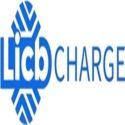Notifications

7 minutes, 30 seconds
-33 Views 0 Comments 0 Likes 0 Reviews

As a leading EV charger manufacturer in China, Topper Company provides dependable electric vehicle charging stations and comprehensive charging solutions.
As electric vehicles (EVs) become more popular worldwide, the safety and durability of EV charging equipment are increasingly important. One common but often overlooked issue is charger overheating. Excess heat not only reduces charging efficiency but can also damage components, shorten your charger’s lifespan, and even create safety hazards.
In this article, we’ll break down the main causes of EV charger overheating and share practical tips to keep your charger running safely and smoothly. Whether you’re a new EV owner or managing multiple chargers for a fleet, understanding these factors will help protect your investment and ensure dependable performance.
Overheating usually results from a combination of electrical, environmental, and hardware factors. Here are the top reasons your charger might be getting too hot:
1. Overloaded Circuits
If your charger shares an electrical circuit with other heavy appliances—like air conditioners, ovens, or water heaters—the combined electrical load can exceed the circuit’s safe capacity. For example, a 7kW or 11kW charger draws a lot of current, and sharing a circuit risks overheating wiring and components, which can impact performance and increase fire risk.
2. Poor Ventilation
EV chargers generate heat while operating, and if they’re installed in tight, poorly ventilated spaces—like cramped garages or closed utility rooms—that heat can build up quickly. Without proper airflow, your charger faces thermal stress, which might cause it to shut down or even fail.
3. Low-Quality Components
Not all chargers are built the same. Some inexpensive or uncertified models use inferior materials and lack critical heat management features such as effective heat sinks, temperature sensors, and insulation. These chargers are more prone to overheating and safety hazards. Investing in a high-quality, certified charger significantly reduces these risks.
4. Harsh Environmental Conditions
Ambient temperature matters. Chargers installed outdoors in direct sunlight or hot climates face extra thermal stress. Without proper weatherproofing or temperature control, even a well-made charger can overheat. Dust, rain, and humidity also pose risks if the charger lacks adequate sealing.
Here’s how you can proactively protect your charger and keep it cool:
1. Use a Dedicated Circuit
Install your EV charger on its own electrical circuit to avoid overloads. This isolates the charger’s power needs and helps prevent heat buildup. For high-power chargers (7kW, 11kW, or 22kW), this is typically required by electrical codes. Consult a licensed electrician if you’re unsure.
2. Choose a Well-Ventilated or Sheltered Location
Place indoor chargers where air circulates freely, avoiding tight corners or near heat-generating appliances. For outdoor chargers, pick shaded spots protected from direct sun and weather. If needed, use weatherproof enclosures with ventilation to prevent trapped heat.
For example, LiCB chargers are designed for both indoor and outdoor use with IP65 waterproof, dustproof, and anti-fog features. Their durable casing protects against rain and debris, helping keep internal temperatures stable.
3. Invest in Certified, High-Quality Chargers
Select chargers that meet strict international safety standards like CE, TUV, FCC, and CCC. LiCB chargers, for instance, use premium materials and include thermal cutoffs and heat-resistant circuit boards to manage temperature spikes during heavy use. While these may cost more upfront, they offer greater safety and reliability over time.
4. Regularly Inspect and Maintain Your Charger
Routine maintenance extends your charger’s life and safety. Check for damaged cables, loose connections, and clean vents or fans to ensure proper airflow.
Consider chargers with real-time temperature monitoring, such as LiCB’s intelligent all-link system, which monitors temperature continuously and can shut down the charger within 0.2 seconds if overheating is detected. This kind of proactive protection is invaluable.
When choosing a modern EV charger, look for these built-in protections:
Integrated Temperature Sensors: Automatically adjust or stop charging if temperatures get too high.
Overcurrent and Overvoltage Protection: Prevents electrical surges from damaging your charger.
Surge and Lightning Protection: Especially important for outdoor chargers to guard against power spikes.
Smart Connectivity and Alerts: App notifications help you monitor charger status and react quickly to issues.
Cooling Mechanisms: Passive heat sinks or active fans regulate temperature during long charging sessions.
If your charger feels excessively hot, shuts down repeatedly, or smells burnt:
Stop charging immediately. Unplug the charger.
Inspect the charger for visible damage to cables, plugs, or the housing.
Check the installation area for adequate ventilation and absence of heat sources.
Contact the manufacturer if under warranty.
Call a certified electrician if you suspect circuit issues or breaker trips.
Never open or repair your charger unless you are a qualified professional.
As EV adoption grows, preventing charger overheating is crucial for safety, efficiency, and longevity. Using a dedicated circuit, selecting the right installation location, investing in certified high-quality chargers like LiCB, and performing regular maintenance will keep your charging system cool and reliable.
Modern safety features such as intelligent temperature control and automatic shutdown further protect your equipment and vehicle, giving you peace of mind. Remember, a well-maintained charger is not just a convenience — it’s an essential part of your EV ownership experience.Know more about Google SEO Directory
China EV Chargers EV Charger Manufacturer EV Charging Solutions

